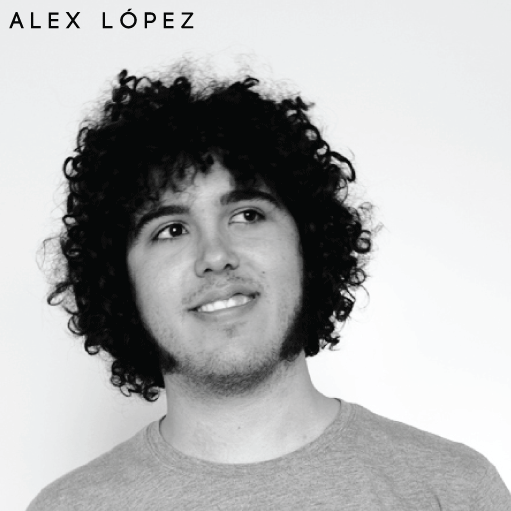The Faces of Culture : Alex López
It's Friday, and that means another face from San Sebastián. In 2016, San Sebastián is one of Europe’s Capitals of Culture, which is why once a week you will hear from a different figure from the cultural scene around these parts.
Presenting this week:
Álex López Allende is a familiar face to anyone who follows the Donosti music scene. A jack-of-all-musical-trades, he plays drums with local garage pop group Kokoshca. But then he also moonlights organizing concerts with Ayo Silver, a concert promoting company he founded. This enthusiasm for the music industry culminated in the opening of Dabadaba, with partners Sebastián Salaberry and Jon Ander Soto, in mid-2014. Dabadaba has since become San Sebastián’s most important alternative music venue.
*Current gig: Promoter at Dabadaba
*Instagram/Twitter: @Marlon_brandy
*Website: www.dabadabass.com
*I’m reading: “Energy Flash: A Journey through rave music and dance culture” by Simon Reynolds
*I’m listening to: To Where The Wild Things Are by Death & Vanilla
Where are you from?
Ibiza.
How long have you lived in San Sebastián?
I was raised in Pasajes since I was four, and I moved to Donostia eight years ago.
San Sebastián in one word: cómoda-acomodada (comfortable-well to do). And too wealthy.
What is your favorite way to experience the culture of San Sebastián?
A concert in Le Bukowski, and now in Dabadaba, of course.
What is the café/bar/restaurant you find yourself in most often?
Bar Narrika!
What’s your perfect Saturday plan in San Sebastián?
A sandwich at Narrika [what he doesn't mention is what he is going to do now that they're closing!], a beer in Aker and Eiger, and finishing off in Bukowski, Dabadaba, and Cactus.
What is your favorite pintxo?
Patatas bravas in Narrika!
The best spot for a selfie in San Sebastián?
The bathrooms of Cactus. Or in the Náutico.
What changes do you see happening here in the next 10 years?
The next five years will be marked by success in tourism and opulence, with a youth that can’t pay stable rents because all the apartments are occupied by foreign tourists. Followed by the popping of the bubble, an unsustainable elderly population and cultural and economic decadence. And a ton of public gyms, of course, because we would never want to go without plenty of gyms.
What is the thing you hope never changes?
That so many people are restless to do something, whether in food or culture.
It’s January 20th, the day of San Sebastián. What are you doing?
Hopefully sleeping.
In your opinion, what makes San Sebastián stand out, what makes it different?
A key geographic location, with an appreciable European influence, a European way of life mixed with a certain taste for Mediterranean living. The mixture is quite unique, really. As well as a culture of hard work..
What is the moment you have felt most proud to be donostiarra?
Once, travelling in the United States, I saw a commercial on a cooking channel about a show featuring Donostia. And a few weeks ago, I was able to see three concerts in one day, there were people in all of them, and I thought ‘whoever does things well and with a bit of coordination and effort can really take advantage of this place.’ I like that thought.
If San Sebastián were your best friend, what advice would you give her?
That she shouldn't spend so much time primping, ugly things can be pretty, too.
If you were a foreigner, what would the ‘insider’ tip that you would like to know about San Sebastián?
Bar Narrika and Egia (Cristina Enea, Bukowski, Daba, Km. 0, Garraxi, Zanpanzar, Sustrai, Cactus, Beti Boga,...).
The most overrated thing about San Sebastián:
The beach.
A typical day for you:
It’s not very interesting. I go from Gros to Egia and Egia to Gros.
Come back every Friday for a new Face of Culture from San Sebastián. If you missed last week's, with Mitxel Ezquiaga, click here. And you can read up on Fernando Álvarez of DSS2016, too.

